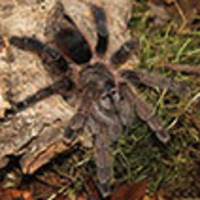- Joined
- Dec 19, 2018
- Messages
- 778
Avicularia morphotypes refer to variations within species of the Avicularia genus, primarily based on physical traits such as colouration, hair patterns, and locality. These morphotypes are often categorized to help differentiate between individuals that may otherwise appear similar but have distinct traits. Only Avicularia Avicularia and Avicularia Juruensis have Morphotypes.
Avicularia Avicularia has six morphotypes.
The six morphotypes of Avicularia avicularia differ mainly in colouration, size, and locality:
Morphotype 1 (M1):
Known as the original A. avicularia, it is the most common in the pet trade. It typically has brown, gold, or green colouration with golden banding. Often sold as "sp. blue velvet" and commonly imported from Guyana.
Morphotype 2 (M2):
Previously referred to as braunshauseni, this morphotype is larger and characterized by dense red hairs on the fourth pair of legs.
Morphotype 3 (M3):
Possibly linked to geroldi. Details are less clear, but it may include an undescribed blue variant recognized within the hobby.
Morphotype 4 (M4):
Includes azureklassi and sp. Tambopota. Specific distinguishing features are not well-documented but are locality-based.
Morphotype 5 (M5):
Also possibly associated with geroldi and velutina. Like M3, its identification remains challenging due to limited descriptions.
Morphotype 6 (M6):
Commonly referred to as metallica. It has two main colour variants: a green form from the Kwitara River and a blue form from Guyana. A third variant, "metallica ceyanne," is also noted.
These morphotypes reflect geographic and physical diversity within the species.
Avicularia Juruensis.
Avicularia juruensis has two recognized morphotypes, which differ in appearance and distribution:
Morphotype 1 (M1):
Colouration: Golden and pink sheen with a whitish carapace, whitish leg rings, and long light brown hairs over shorter darker hairs. This morphotype was previously identified as A. urticans.
Distribution: Found mainly in Brazil.
Morphotype 2 (M2):
Colouration: Intense purple sheen with yellower leg rings. Females have long reddish-brown hairs on the abdomen, while males have white-tipped hairs evenly distributed on the abdomen. Commonly referred to as "sp. Peru purple" in the hobby.
Distribution: Found in Ecuador, Peru, and Colombia, with a broader range than M1.
These morphotypes are distinguished by their colouration and geographic range but share similar physical structures and habits.
Anyone has anything to add or if I have went wrong somewhere please let me know. Also here is a link to the full revision if anyone wants a read.

Avicularia Avicularia has six morphotypes.
The six morphotypes of Avicularia avicularia differ mainly in colouration, size, and locality:
Morphotype 1 (M1):
Known as the original A. avicularia, it is the most common in the pet trade. It typically has brown, gold, or green colouration with golden banding. Often sold as "sp. blue velvet" and commonly imported from Guyana.
Morphotype 2 (M2):
Previously referred to as braunshauseni, this morphotype is larger and characterized by dense red hairs on the fourth pair of legs.
Morphotype 3 (M3):
Possibly linked to geroldi. Details are less clear, but it may include an undescribed blue variant recognized within the hobby.
Morphotype 4 (M4):
Includes azureklassi and sp. Tambopota. Specific distinguishing features are not well-documented but are locality-based.
Morphotype 5 (M5):
Also possibly associated with geroldi and velutina. Like M3, its identification remains challenging due to limited descriptions.
Morphotype 6 (M6):
Commonly referred to as metallica. It has two main colour variants: a green form from the Kwitara River and a blue form from Guyana. A third variant, "metallica ceyanne," is also noted.
These morphotypes reflect geographic and physical diversity within the species.
Avicularia Juruensis.
Avicularia juruensis has two recognized morphotypes, which differ in appearance and distribution:
Morphotype 1 (M1):
Colouration: Golden and pink sheen with a whitish carapace, whitish leg rings, and long light brown hairs over shorter darker hairs. This morphotype was previously identified as A. urticans.
Distribution: Found mainly in Brazil.
Morphotype 2 (M2):
Colouration: Intense purple sheen with yellower leg rings. Females have long reddish-brown hairs on the abdomen, while males have white-tipped hairs evenly distributed on the abdomen. Commonly referred to as "sp. Peru purple" in the hobby.
Distribution: Found in Ecuador, Peru, and Colombia, with a broader range than M1.
These morphotypes are distinguished by their colouration and geographic range but share similar physical structures and habits.
Anyone has anything to add or if I have went wrong somewhere please let me know. Also here is a link to the full revision if anyone wants a read.

Taxonomic revision and cladistic analysis of Avicularia Lamarck, 1818 (Araneae, Theraphosidae, Aviculariinae) with description of three new aviculariine genera
The genus Avicularia Lamarck, 1818 is revised and all species are rediagnosed. The type species, described as Aranea avicularia Linnaeus, 1758, is the oldest mygalomorph species described and its taxonomic history is extensive and confusing. Cladistic analyses using both equal and implied...
zookeys.pensoft.net
Last edited:
